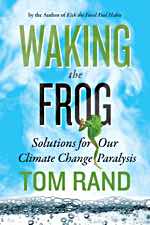 John O’Sullivan — the pseudosceptic who is serially and persistently wrong about almost everything he chooses to write about, and who has made a career out of misrepresenting his own abilities and qualifications — is at it again. In a “review” of a new book by Canadian denier Tim Ball (left), O’Sullivan ((With co-author Hans Schreuder.)) writes:
John O’Sullivan — the pseudosceptic who is serially and persistently wrong about almost everything he chooses to write about, and who has made a career out of misrepresenting his own abilities and qualifications — is at it again. In a “review” of a new book by Canadian denier Tim Ball (left), O’Sullivan ((With co-author Hans Schreuder.)) writes:
The courage and forthrightness Tim Ball has shown with this book, and in the British Columbia Supreme Court defending himself against the now failed libel suit of Michael Mann, is about to be vindicated by the judiciary. As the scientific community awaits Ball’s impeding legal triumph, we may edify ourselves not just with the black and white evidence presented in this extraordinary publication, but in the certain knowledge that Mann and his co-conspirators have spectacularly failed in their bid to silence dissent against their fraudulent science.
Mann’s abortive attempt to sue Ball in the British Columbia Supreme Court ultimately back-fired because Mann refused to show his metadata, his calculations for his junk science, in open court. Now Mann faces possible bankruptcy on top of professional suicide, as the price for his misdeeds.
What purple prose! What hyperbole! What utter crap.
Mann’s lawyer, Roger McConchie writes:
Their assertion that Dr. Mann faces possible bankruptcy is nonsense. Dr. Mann’s lawsuit against Dr. Ball and other defendants is proceeding through the normal stages prescribed by the BC Supreme Court Civil Rules and Dr. Mann looks forward to judicial vindication at the conclusion of this process.
In other words: O’Sullivan’s wrong again. The court case is very much on, and Tim Ball is in deep trouble. Ball’s book, teasingly titled The Deliberate Corruption of Climate Science is another matter. A cursory glance at the sample available via Amazon suggests that it’s yet another in a long line of conspiracist nonsense about the climate issue — eerily reminiscent of Ian Wishart’s Air Con in its suggestions of cabals at the UN, environmentalism as a religion, and Maurice Strong and Prince Philip as some sort of evil overlords. Mr McConchie is undoubtedly looking over the text with considerable interest…
Like this:
Like Loading...
 Canadian Tom Rand is an enthusiastic promoter of the clean technologies which are fully capable of saving us from the worst ravages of climate change. He’s also an investor in the field – a capitalist, he happily acknowledges. And importantly for his readers he’s a lively and thoughtful writer with a knack for striking observation. Waking the Frog: Solutions for our Climate Change Paralysis [Amazon] is partly an attempt to understand why we have stepped back from what looked in the early 1990s like a promising start to rein in greenhouse gas emissions. It is also an affirmation that we have the means to move rapidly away from fossil fuels if we have the will.
Canadian Tom Rand is an enthusiastic promoter of the clean technologies which are fully capable of saving us from the worst ravages of climate change. He’s also an investor in the field – a capitalist, he happily acknowledges. And importantly for his readers he’s a lively and thoughtful writer with a knack for striking observation. Waking the Frog: Solutions for our Climate Change Paralysis [Amazon] is partly an attempt to understand why we have stepped back from what looked in the early 1990s like a promising start to rein in greenhouse gas emissions. It is also an affirmation that we have the means to move rapidly away from fossil fuels if we have the will.



 I took
I took